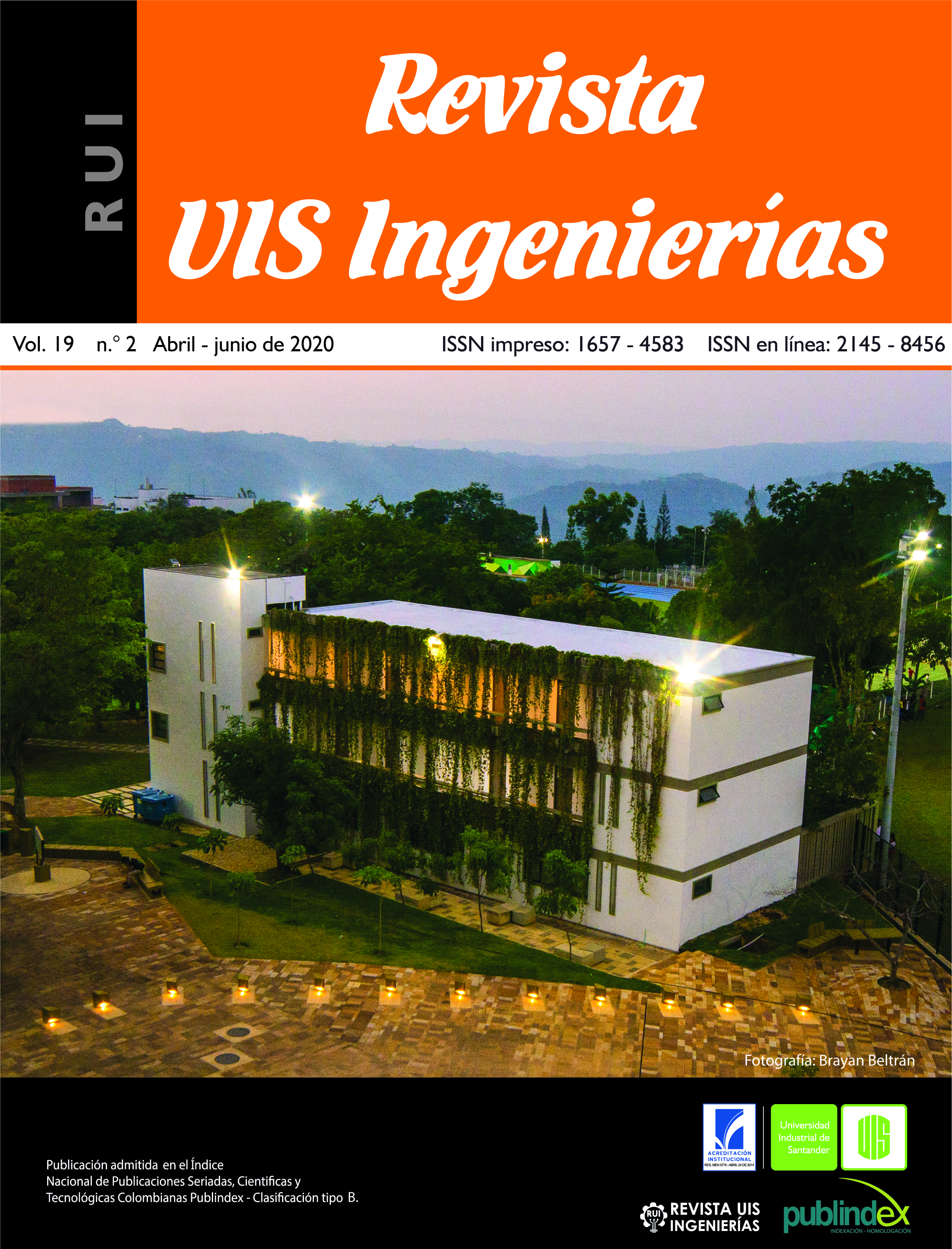Capacity analysis in a heterogeneous network using power control and spectrum allocation based on game theory
Published 2020-03-09
Keywords
- HetNet,
- capacity,
- game theory,
- ideal power control
How to Cite
Copyright (c) 2020 Revista UIS Ingenierías

This work is licensed under a Creative Commons Attribution-NoDerivatives 4.0 International License.
Abstract
This article shows the analysis of the capacity carried out in a HetNet, it proposes an adaptation of an algorithm of power control and spectrum allocation based on game theory. For this, users and base stations are randomly arranged within a simulation scenario, then the behavior is analyzed in terms of capacity proposed for voice and voice and data services. The results obtained are compared using the same simulation parameters with the ideal power control algorithm for the previously defined services.
Downloads
References
[2] A. U. Ahmed, M. T. Islam, M. Ismail, M. Ghanbarisabagh, “Dynamic resource allocation in hybrid access femtocell network.,” ScientificWorldJournal., vol. 2014. doi: 10.1155/2014/539720
[3] R. Q. Hu and Y. Qian, “An Energy Efficient and Spectrum Efficient Wireless Heterogeneous Network Framework for 5G Systems,” no. May, pp. 94–101, 2014.
[4] S. Yuan and Q. Liang, "Game Theoretical Method for Sum-Rate Maximization in Full-Duplex Massive MIMO Heterogeneous Networks," 2015 IEEE 12th International Conference on Mobile Ad Hoc and Sensor Systems, Dallas, TX, 2015, pp. 610-615. doi: 10.1109/MASS.2015.109
[5] D. Rosero and A. Jordan, “Incidencia de un Algoritmo de Control de Potencia en la Capacidad de una Red Heterogénea,” trabajo de fin de grado, Universidad del Cauca, 2016.
[6] C. Narvaez and I. Teran, “Análisis Del Throughput de una Red Heterogénea que Implemente un Algoritmo de Asignación de Espectro Basado en Teoría de Juegos,” trabajo de fin de grado, Universidad del Cauca, 2016.
[7] H. Zhang, X. Chu, W. Guo and S. Wang, "Coexistence of Wi-Fi and heterogeneous small cell networks sharing unlicensed spectrum," in IEEE Communications Magazine, vol. 53, no. 3, pp. 158-164, March 2015. doi: 10.1109/MCOM.2015.7060498
[8] H. Vásquez, C. Hernández, and I. Páez, “Proactive Spectrum Handoff Model with Time Series PredictionProactive Spectrum Handoff Model with Time Series Prediction,” Int. J. Appl. Eng. Res., vol. 10, no. 21, pp. 42259–42264, 2006.
[9] Z. Mlika, E. Driouch, and W. Ajib, “A fully distributed algorithm for user-base station association in HetNets,” Comput. Commun., vol. 105, pp. 66–78, 2017. doi: 10.1016/j.comcom.2017.01.013
[10] W. Yalong, L. Xi, Z. Heli, and W. Ke, “Resource allocation scheme based on game theory in heterogeneous networks,” J. China Univ. Posts Telecommun., vol. 23, no. 3, pp. 57–88, Jun. 2016. doi: 10.1016/S1005-8885(16)60033-X
[11] A. S. M. Z. Shifat, M. Z. Chowdhury, and Y. M. Jang, “A game theoretical approach for QoS provisioning in heterogeneous networks,” ICT Express, vol. 1, no. 2, pp. 90–93, Sep. 2015.
[12] P. Alvarez Causelo, Teoría de Juegos. Cantrabria, España: OpenLibra, 2015.
[13] V. F. Mirama Perez, “Control de Potencia Basado en Teoría de Juegos en Comunicaciones Inalámbricas,” trabajo de fin de grado, Universidad del Cauca, 2012.
[14] E. Martínez, “Concepto de solución para los juegos cooperativos,” Anuario jurídico y económico escurialense, no. 37, pp. 409-425, 2017.
[15] M. A. Cardenas and J. M. Chapid, “Implementación de un algoritmo de control de potencia basado en la teoría de juegos en un sistema multicelular limitado por interferencia con portadora única,” trabajo de fin de grado, Universidad del Cauca, 2015.
[16] V. F. Mirama Perez and V. M. Quintero Florez, "Control de potencia en sistemas de comunicaciones inalámbricos basado en un juego no formal," Revista GTI, vol. 11, no. 30, pp. 37-45, 2012.
